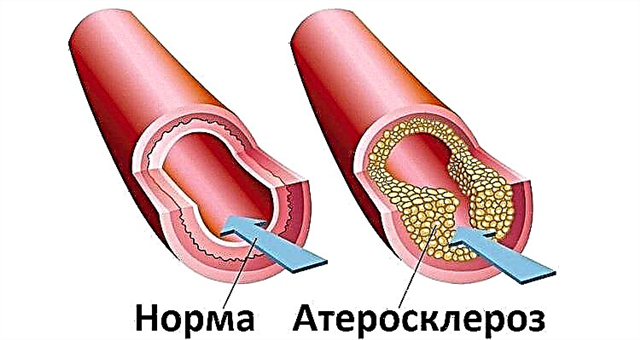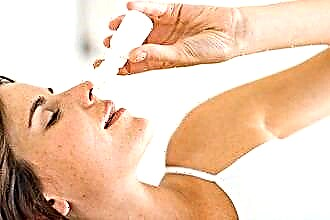Vegetovascular dystonia is characterized by dysfunction of the autonomic nervous system, resulting in disorders of the functioning of many internal organs. The VSD also negatively affects mental health. In mild cases, this is manifested only by increased irritability and bad mood. However, more serious conditions, including neuroses, often develop. This condition requires an integrated approach to treatment, the use of both traditional methods and psychotherapy.
The reasons for the appearance of neurosis against the background of VSD
In fact, neurosis is a state of exhaustion of the nervous system that occurs during prolonged and intense stressful situations, insoluble internal conflicts and manifests itself in a variety of physical and mental symptoms.
Among the physical are:
cardiac or headaches;
- feeling of weakness, fatigue;
- dizziness, darkening in the eyes;
- sleep disturbance (difficult to fall asleep, superficial sleep, frequent awakenings, a feeling of weakness in the morning);
- disorders of the intestinal tract (poor appetite, pain in the abdomen, dysfunction of the intestines and stomach);
- vegetative disorders (excessive sweating, pressure drops, a feeling of an irregular heartbeat).
Mental include:
- hypochondriac syndrome;
- increased anxiety, attacks of panic and fear;
- mood swings;
- communication problems;
- irritability, nervousness;
- high sensitivity to external stimuli: light, sounds, smells;
- low stress resistance.
The clinical signs of VSD are almost the same, however, somatic disorders predominate in dystonia. The causes of these diseases are largely the same:
- prolonged emotional or physical stress;
- lack of sleep;
- bad habits;
- chronic diseases;
- poor nutrition;
- traumatic brain injury;
- changes in hormonal levels;
- osteochondrosis of the cervical vertebrae.
It is easy to see that both the causes and the main symptoms of VSD and neurosis are very similar. Often, doctors confuse these conditions, or both diseases are present in the same patient.
Treatment
First of all, when characteristic symptoms appear, it is necessary to consult a doctor in order to undergo all examinations and establish an accurate diagnosis. This is very important, since dangerous diseases such as coronary heart disease or depression can hide behind the mask of vegetative-vascular dystonia or neurosis.
Both neurosis and VSD require almost the same treatment. At the same time, an integrated approach is applied using medications, psychotherapy, physiotherapy exercises, physiotherapy methods. It is also very important to follow preventive recommendations, which to a greater extent affect the causes of the disease.
Of course, first of all, it is necessary to restore the patient's psyche, because this is the main reason. The doctor should identify factors, including hidden ones, that contributed to the development of the disease, and help the patient fight them, teach him to control stress. In modern medicine, the approaches of psychoanalysis and cognitive-behavioral psychotherapy are used. Meditation and auto-training are considered very effective preventive methods.
To stop unpleasant symptoms, medication is used. In this case, the following groups of drugs are used:
- antidepressants;
- sedatives;
- beta blockers;
- vitamins.
Physiotherapy has a complex effect on the body, is well tolerated by patients and has almost no contraindications. Its main methods include:
- acupuncture;
- electrophoresis;
- massage;
- water procedures.
Use of vitamin complexes
The very name (translated as "amines of life") speaks of the importance of these substances in the functioning of the body. With any disease, the consumption of vitamins increases significantly, while their intake with food may decrease (for example, due to impaired appetite). Therefore, most doctors prescribe the appropriate drugs to compensate for the deficit arising from VSD and neurosis:
- Vitrum;
- Supradin;
- Pikovit.
However, it is much better to use natural forms such as fresh fruits and vegetables. Another danger is vitamin overdose, which is just as dangerous as lack of them. Therefore, do not try to heal yourself, be sure to consult a doctor.
For the treatment of VSD and neuroses, the following vitamins are required:
- B1 (Thiamin) - found in bread, liver, beef, black currant;
- B3 (Niacin) - meat and dairy products, cereals;
- B6 (Pyridoxine) - carrots, nuts, potatoes, liver;
- B12 (Cyanocobalamin) - beef, seafood, herbs;
- PP (nicotinic acid) - apples, cherries, grapes;
- C (ascorbic acid) - citrus fruits, currants, cabbage, beets.
The effectiveness of gymnastics and exercise therapy
The effect of remedial gymnastics with VSD and neuroses is very large. In the process of physical exertion, "hormones of happiness" are produced: endorphin and serotonin. It helps to fight stress and neurasthenia well. In addition, exercise therapy strengthens the general tone, immunity, improves blood circulation, which has a positive effect on the patient's condition, especially in hypotonic form.
A very good method that perfectly treats VSD and neurosis is breathing exercises that can train the autonomic nervous system, improve the blood supply to the brain. They have a calming effect, allow you to cope with panic attacks, which often occur with VSD.
Exercise therapy classes should be strictly controlled by a doctor, because this is the only way they can benefit, not harm. It is recommended to leave professional sports for a while, which usually requires significant loads incompatible with such a disease.
Conclusions
Vegetovascular dystonia and neuroses are concomitant diseases and arise as a result of impaired activity of the nervous system.
Common etiological factors and manifestations contribute to the fact that their treatment is largely the same and consists in symptomatic pharmacotherapy, psychotherapy and physiotherapy exercises.



